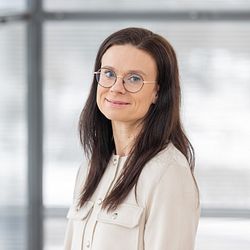
News -
The world's first plant to test carbon dioxide capture from the high-temperature incineration of hazardous waste is inaugurated in Nyborg, Denmark
Recycling & Waste in Nyborg is taking a big step towards making its treatment process climate neutral from 2030. After double-digit million investments and several years of work, the company is now ready to trial and test a pilot CO2 capture plant in Nyborg in the first half of 2025.
The perspective for the ground-breaking pilot project is to build a full-scale plant that can capture approximately 145,000 tonnes of CO2 from the thermal treatment of the approximately 180,000 tonnes of hazardous industrial waste that the Nyborg company converts into district heating and electricity each year. The energy from the plant accounts for approximately 80% of the district heating for the citizens of Nyborg. By realizing its CO2 ambition, the company will also contribute to a reduction of approximately 38% of Nyborg Municipality's total greenhouse gas emissions by 2030.
Head of Waste Management Services Denmark at Recycling & Waste, Jens Peter Rasmussen, is pleased that the company is now ready to gather concrete and vital knowledge about how effectively it can capture CO2: "The pilot project will show the direction and qualify the decision-making basis for our ambition to minimize the climate impact of the final treatment of industrial hazardous waste," he says.
The pilot project will capture CO2 from two of the three rotary kiln lines at the Nyborg plant. This will be done using amine technology in a test plant for CO2 capture that the supplier SLB Capturi has been developing over almost 20 years. It will now demonstrate its potential at the Nyborg plant for hazardous waste, where the waste composition varies greatly compared to conventional incinerators. The project will provide the technical basis for applying for funding from the Danish government's CCS pool to finance a possible further project with CO2 capture and storage.
In line with the ambitions of the new owner
In December, investor company Summa Equity acquired Recycling & Waste for €800 million through its Norwegian portfolio company NG Group with the aim of becoming a Nordic leader in the circular economy. The integration process between the Nordic companies is at full speed and in April they will be united under the name, NG Nordic. Read more information about the acquisition here.
Group CEO at NG, Bjørn Arve Ofstad says: "We want to help our customers reduce CO2 emissions, reach their recycling targets, protect nature and stay competitive. The climate ambition for the high-temperature plant in Nyborg is an important step forward for our group, where the majority of sales are in line with the EU taxonomy, emphasizing our strong commitment to sustainability."
The Danish project is part of Recycling & Waste's Carbon2x concept
It has not yet been decided how the captured CO2 will be used, but it is most likely that the captured CO2 will be stored underground for the first few years. This depends partly on the knowledge that Recycling & Waste gathers from the pilot project and a more detailed analysis of the future framework and market conditions.
Recycling & Waste's Carbon2x concept has the long-term goal of recycling the carbon from the CO2 generated in the incineration processes the company operates to return it to the material cycle, for example in the form of high-quality plastic. The company has demonstrated this in another pioneering project at the Riihimäki waste-to-energy plant in Finland. Read more about INGA here.
About the technology
The pilot project is based on SLB Capturis' well-proven amine technology, which has proven to be effective especially for conventional incinerators. The amine technology consists of an absorption process where a solvent (here: amine) is used to capture the CO2 from the flue gas. The cleaned flue gas is then discharged into the atmosphere and the solvent with CO2 is pumped into a desorption plant (‘stripper’) where heat is applied and the CO2 is released (boiled off) from the solvent. It can then be collected and compressed for transport for storage or recovery. Once the solvent has released CO2, it is cooled down and a new cycle can begin.
Further information:
Jesper Hansen, Communications Specialist, Recycling & Waste, +45 3085 8133, jesper.hansen@fortum.com
